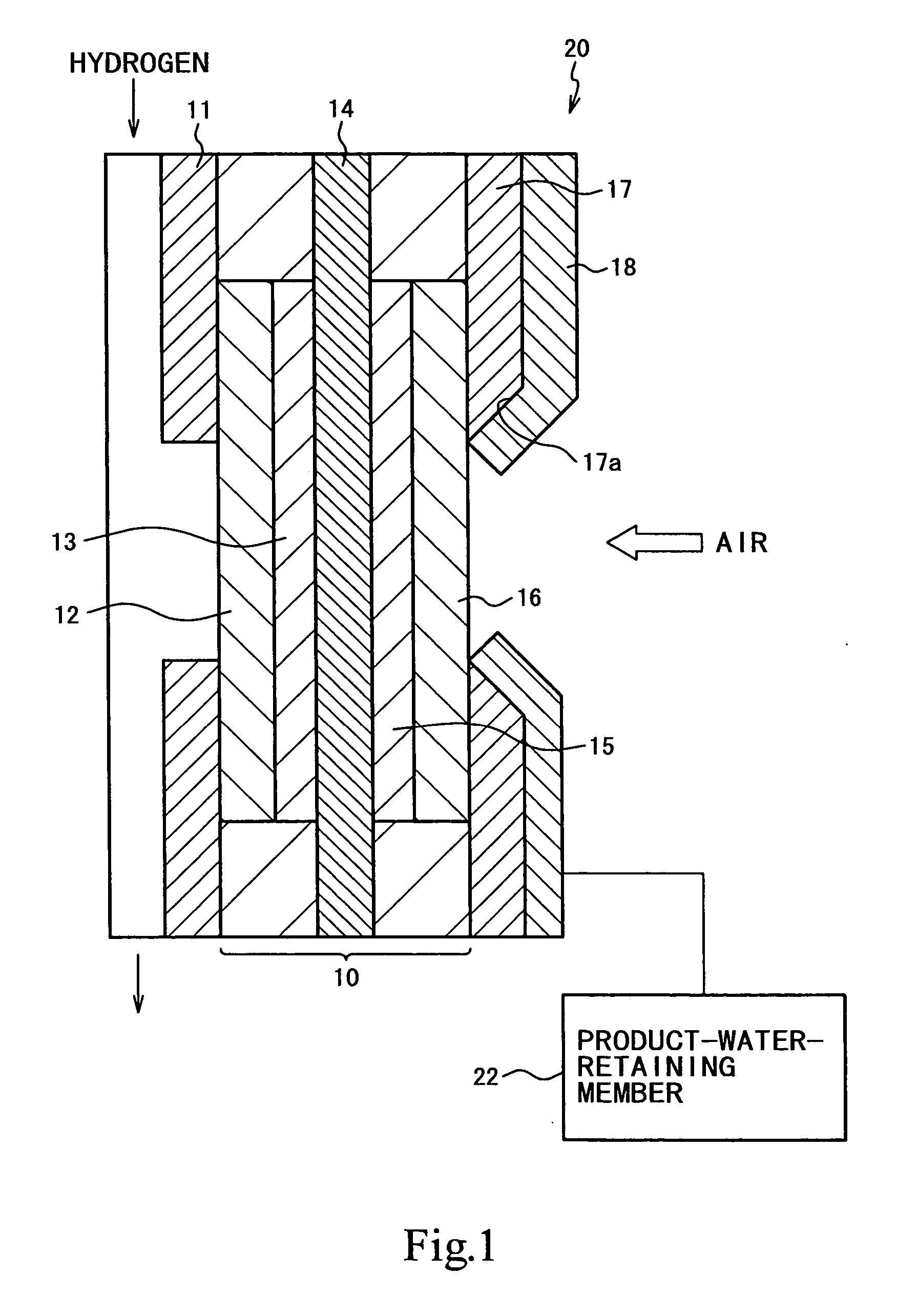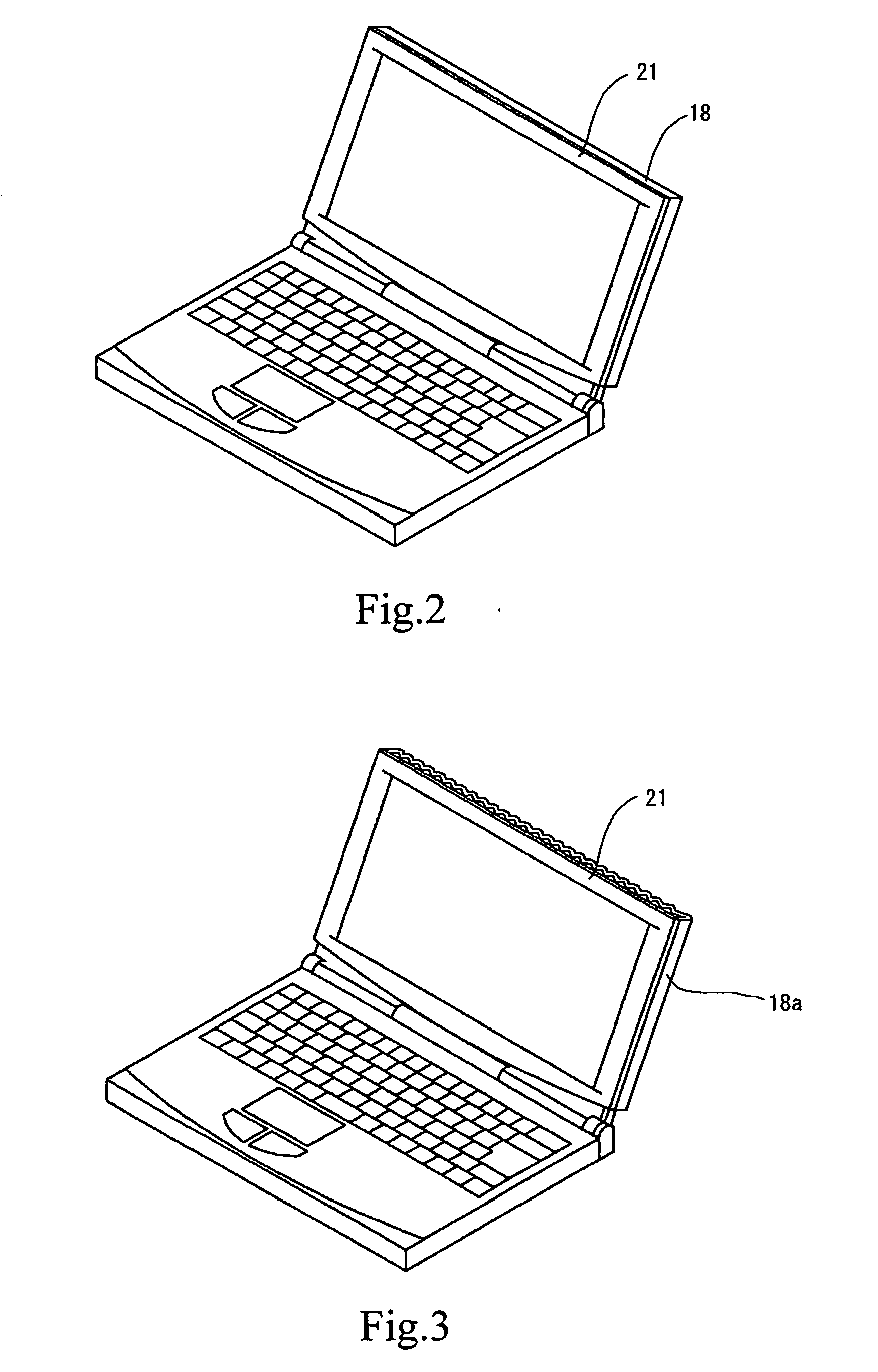Formation water treating system and formation water treating method, and power generator
a technology of formation water and water treatment system, which is applied in the direction of electrochemical generators, cell components, cell components, etc., can solve the problems of reducing power generation efficiency, affecting the efficiency of power generation, and affecting the placement of devices, so as to avoid interference of flow, prevent the oxidizer supply groove from being blocked, and stabilize the power generation efficiency
- Summary
- Abstract
- Description
- Claims
- Application Information
AI Technical Summary
Benefits of technology
Problems solved by technology
Method used
Image
Examples
first embodiment
[0088] First, the water disposal system exemplified as a first embodiment will be explained.
[0089]FIG. 1 is a sectional view showing an exemplary power generation apparatus to which the water disposal system is applied. The water disposal system has a power generator, a water-absorbing member disposed to the power generator as being extended therefrom, for recovering and moving the water with the aid of capillary phenomenon, and a water-retaining member for temporarily accumulating the water.
[0090] More specifically as shown in the figure, a power generation apparatus 20 has, as major constituents, a hydrogen-side current collector 11 provided to an anode which corresponds to a hydrogen-side electrode, an oxygen-side current collector 17 provided to a cathode which corresponds to an oxygen-side electrode, and a power generator 10 held between the hydrogen-side current collector 11 and oxygen-side current collector 17.
[0091] On the oxygen-side current collector 17 of the power gene...
second embodiment
[0129] Next paragraphs will describe a water disposal system exemplified as the
[0130] The second embodiment relates to a fuel cell as a power generation apparatus to which the water disposal system is applied. The fuel cell is configured by stacking a plurality of the power generator, so-called MEA, which has a predetermined electrolyte film provided between an anode and a cathode, wherein the MEA is held between thin-plate-formed separators having, as being formed on the front and back surfaces thereof, a hydrogen supply groove as a fuel supply groove for supplying hydrogen to the anode, and an air supply groove as an oxidizer supply groove for supplying air to the cathode, so as to produce power generation by supplying hydrogen and air through the separators.
[0131] The fuel cell is specifically configured as having a means for disposing the water, provided at least on the midway portion of the air supply groove formed on the separator, to thereby make it possible to efficiently a...
third embodiment
[0201] A water disposal system exemplified as a third embodiment will be explained.
[0202] The third embodiment is a further modification of the above-described first and second embodiments, aiming at further raising efficiencies in water absorption and collection of generated electricity, by providing a water-absorbing layer having at least water absorbency, air permeability and electro-conductivity, between the diffusion layer and the collector which serves as the current collector.
[0203] In the aforementioned first and second embodiments, it was explained, referring to a fuel cell 300 as the power generation apparatus shown in FIG. 18, that the water, produced during the power generation in a hydrogen-side catalyst layer 302 and an oxygen-side catalyst layer 303 placed on both sides of a predetermined electrolyte film 301, moves to a carbon fiber layer 304 which is a diffusion layer composed of a paper-sheet-formed carbon fiber with a water-repellent finish, and the water is then...
PUM
 Login to View More
Login to View More Abstract
Description
Claims
Application Information
 Login to View More
Login to View More - R&D
- Intellectual Property
- Life Sciences
- Materials
- Tech Scout
- Unparalleled Data Quality
- Higher Quality Content
- 60% Fewer Hallucinations
Browse by: Latest US Patents, China's latest patents, Technical Efficacy Thesaurus, Application Domain, Technology Topic, Popular Technical Reports.
© 2025 PatSnap. All rights reserved.Legal|Privacy policy|Modern Slavery Act Transparency Statement|Sitemap|About US| Contact US: help@patsnap.com



